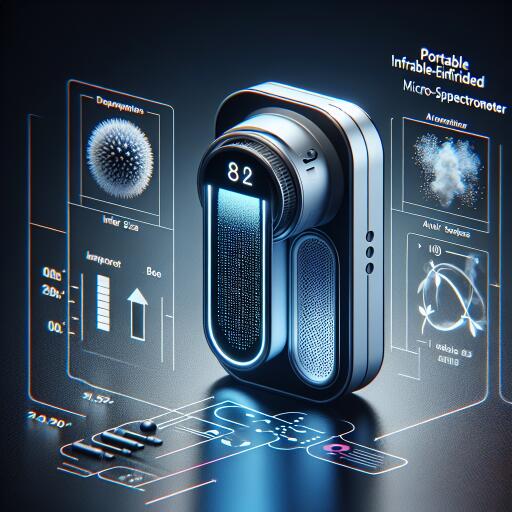New Portable Infrared Micro-Spectrometers for Improved Air Quality Monitoring
In a groundbreaking development, a team from the Centre at the University of Melbourne has made significant strides in the field of air quality monitoring. Their pioneering research has led to the creation of a highly advanced microspectrometer that leverages machine learning and metasurface spectral filter arrays. This innovative technology is capable of detecting the unique infrared signatures of various gases using a single, compact sensor.
The current iteration of this device is remarkably small, with dimensions akin to a matchbox. However, there is a strong potential for further miniaturization. This represents a major leap forward from the traditional infrared spectrometers which, despite their proficiency in gas detection, are bulky and generally confined to laboratory settings.
What sets this new device apart is its utilization of a metasurface filter combined with a standard infrared (IR) detector. This strategic integration facilitates the miniaturization process, enabling the crafting of sensors from materials that are only nanometers thick. The metasurface filter array, a key component of this technology, is adept at identifying various harmful gases. It is constructed from metallic nanostructures strategically placed on a silicon substrate. The unique spectral features of these nanostructures can be easily adjusted by modifying their periodicity, a technique that has proven effective in detecting gases like carbon dioxide, methane, ammonia, and methyl-ethyl-ketone.
The device’s exceptional functionality is largely attributed to its metasurface filter array, which works in tandem with a commercially available IR camera. This combination results in a system that is not only compact, measuring approximately 1 cubic centimeter and weighing about 1 gram, but also free from consumables. The integration of machine learning algorithms enables the accurate prediction of present gases by analyzing the data collected by the microspectrometer.
There is an ongoing effort to enhance the sensitivity of this device and bolster its overall robustness. The implications of such advancements are far-reaching, potentially ushering in new avenues for chemical detection across various mediums, including solids and liquids. This technology heralds a future where air quality monitoring is more accessible and integrated into a wider range of applications, such as wearable devices and the Internet of Things. The shift towards portable, multi-gas detectors marks a significant departure from the limitations posed by existing technology, which relies on bulky, multiple sensor setups and chemiresistors that deliver subpar performance and possess limited operational lifespans.
The enthusiasm surrounding this technology is palpable among researchers, who see its application extending beyond the current scope to address a myriad of chemical detection challenges. As the research progresses, the potential for this technology to transform air quality monitoring and environmental safety continues to grow, promising a future where comprehensive gas detection is both practical and ubiquitous.
In conclusion, the development of this new portable infrared micro-spectrometer represents a monumental step forward in air quality monitoring capabilities. Its small size, lightweight nature, and the capacity to detect multiple gases with a single sensor without the need for consumables make it a revolutionary tool in the quest for better environmental and health safety measures. As the technology evolves, the possibilities for its application seem limitless, promising a healthier, more informed future for all.










